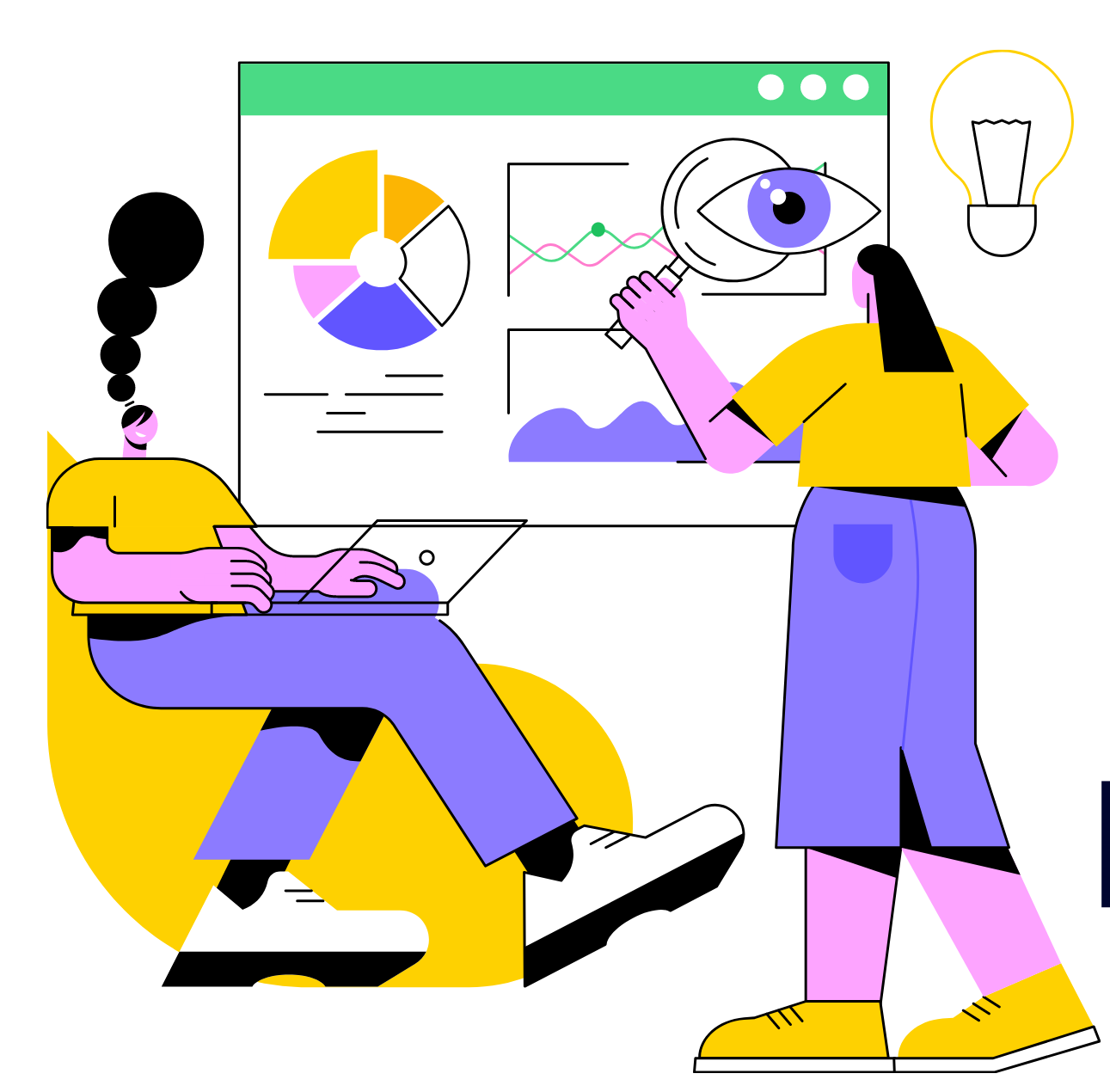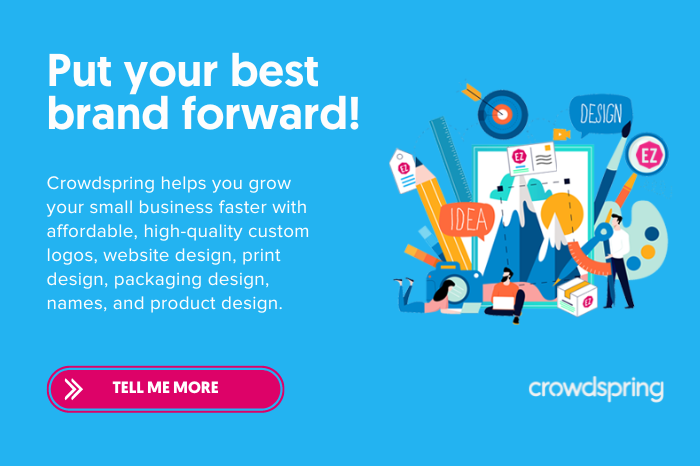Marketing Funnels: The Definitive Small Business Guide (2022)
11 min read
People rarely buy something from your company during their first interaction. Typically, they go through a series of stages as they consider whether to buy.
Smart marketers and business owners proactively define those stages to maximize conversions by understanding, planning, and creating marketing funnels.
What is a marketing funnel?
A marketing funnel is a series of stages that guide prospects to become customers. These stages range from a prospect’s first interaction with your company to their decision to purchase.

Your marketing funnel helps you visualize how your company converts leads into customers.
The benefits of having a marketing funnel
Marketing funnels help businesses prioritize and execute a productive marketing strategy. Marketing funnels:
- Streamline the customer journey. The clearly defined steps and triggers of a marketing funnel make it easy for prospects and customers alike to take a desired and relatively predictable action within the customer journey.
- Make analytics easy to track. The segments or steps of a funnel allow businesses and marketers to track and observe which segments of the customer journey are generating the highest conversions and which are falling short.
- Identify areas that need improvement. The defined stages of a marketing funnel allow you to make tweaks and improvements, as necessary, to optimize your marketing strategy.
- Help define a sales methodology. The phases of marketing funnels teach salespeople how to move customers through a logical sales process to finalize a purchase.
- Reduce costs. Predictable and observable progress can help maximize productivity and cost per lead.
- Increase revenues. Businesses lose up to $1.6 trillion per year when customers leave them.
Want a free brand review?

Answer 5 short questions and we will send a custom report with actionable insights and specific actions you can take to build a stronger brand.
We just emailed the info to you.
What are the four primary stages of a marketing funnel?
There are four primary marketing funnel stages: Awareness, Interest, Desire, and Action. These stages are sometimes referenced by the acronym “AIDA,” named by Elias St. Elmo Lewis.
First stage: Awareness
The awareness stage is when a person first becomes aware of your product or service. This is likewise where lead generation takes place.
A prospect might develop brand awareness from seeing your ads, encountering your brand on social media, or hearing feedback from friends or family.
A prospect might also have found out about your business by doing a Google search that brought up your company’s website or by reading your blog.
With the ideal circumstances and the right time, the prospect might turn into a customer by clicking a link and buying your product or paying for your services.
However, because we’re at the top of the funnel, it’s more likely that some convincing is needed for the prospect to visit your store or website, engage with your business, or contact you by phone or email.
Second stage: Interest
In the interest stage, prospective buyers learn more about the product and brand. This stage is an excellent opportunity for brands to build relationships with prospective buyers.
The prospect can learn about your company, brand, and products or services at this stage. You can nurture leads through content, newsletters, email marketing campaigns, classes, and more.
This is the ideal time to introduce the benefits of your product or service and brand positioning.
But ensure that you inform and educate prospects without overtly selling to them. A sales approach that comes off as being too pushy or aggressive during this stage could turn prospects off and compel them to leave. To mitigate this, produce content that demonstrates your expertise in the field. This will ultimately help the prospect make an informed decision in the later stages of the funnel.
Third stage: Desire/Decision
The desire or decision stage of the funnel sees the prospect getting ready to buy.
The prospect might be considering several options before making the purchase. They will typically be comparing pricing, packages, and other factors to find the best option for them. Or they might even have your product added to their cart.
At this stage, make your best offer. You can, for example, provide free shipping, a discount code, or a bonus product when they confirm their order.
The goal is to make the offer so irresistible that the prospect will want to move forward and purchase.
Fourth stage: Action
The final stage of the funnel is also where the prospect presumably makes the final decision to buy the product or the service (or they decide to leave without making a purchase).
Although the sale is complete, the process never ends. It is essential to understand that although the action stage is touted as a “final” stage, it is not the end of the customer journey.
The savvy business owner or marketer will take extra steps to make this stage a positive buying experience.
A positive experience leads to referrals and repurchases, which keeps the marketing funnel productive.
At this point, your goal is to focus on customer retention, so the customer makes ongoing or future purchases.
In the action stage, your content should begin nurturing customer loyalty. For example, you can build an automation flow that can include any or all of the following:
- Thanking the customer for their purchase,
- Sending them helpful and relevant order confirmation details,
- Requesting feedback,
- Offering after-purchase support,
- Inviting them to sign up for your newsletter, and
- Enrolling them in a rewards program (if you have one)
Types of marketing funnels
There are many different types of marketing funnels. Let’s look at the most popular marketing funnels:
Lead generation funnel
This funnel has one clear and simple goal: to get leads. There are many ways to get leads, but we can split them into two main categories: paid and organic.
Paid channels refer to anything where you pay for views or impressions. So we’re talking ads and promoted or sponsored posts.
Organic channels refer to all of the free ways one could get leads. Some examples of this include social media, website traffic, and word of mouth.
Sales letter funnel
The sales letter funnel is a traditional type of marketing funnel. This particular funnel uses long-form sales letters to sell a service or product and can include upsells, cross-sells, or downsells along with the main sell.
Squeeze page marketing funnel
The purpose of this funnel is to arouse curiosity in the prospective buyer. There are no fancy pictures or extra links. It is a specific page to get the visitor to give you their email address.
This funnel often utilizes a curiosity-baiting headline to get the readers’ attention. The visitor must enter their email address and click submit to get an answer to the question.
Squeeze pages are very effective for attracting a new audience and usually yield high conversion rates.
Membership marketing funnel
This is used in conjunction with a membership site and will most likely include a paywall of sorts. The visitor must pay for further access, such as paid articles or newsletters. These memberships can be sold via a video, a sales letter, or a webinar.
Survey funnel
The survey funnel has two main goals. The first is to get the web visitor to engage. This funnel typically requires a user to answer a short survey after opting in, ideally before they gain access to your lead magnet.
The second goal is to determine your visitor’s identity. That way, you can personalize sales pitches.
How to build a marketing funnel
1. Define the problem you want to solve
You must identify and understand your audience for your sales funnel to work.
You can start by identifying your target audience’s demographics. You need to know their age, economic bracket, interest, and educational level. After that, you need to identify and assess their needs and demands.
What are their crucial pain points? What are their interests?
The more information you have, the better you can advertise your products and create appealing offers.
2. Define your goals
Now, it’s time to define your goals.
Goals could range from more leads, sign-ups, or higher conversions.
Goals let you decide exactly what you want from each part of your funnel, which is vital for determining whether it’s effective.
3. Create a landing page
Regardless of whether your leads arrive on your landing page from an ad click or through or link on your social media page, one thing is sure: the landing page is where your prospects first learn about your business and its products and services.
Your landing page should clearly describe your business and highlight the unique selling propositions of your product or service.
4. Create a preliminary offer to generate leads
You must catch the attention of potential customers before you can convert them. Consider what incentives might pique someone’s interest, such as a free trial or an ebook in exchange for contact information.
Select marketing techniques that are effective actions to get the target customer to take action and buy a product or service. Digital advertising, email marketing initiatives, and social media campaigns are some of the most successful marketing strategies.
5. Build your marketing funnel stages
Having analyzed and identified your audience’s behavior, you can proceed to define the stages for your marketing funnel carefully. This way, you can get a clear picture of the ideal customer journey.
6. Qualify leads to confirm interest in the product
Not all leads are equal. Some may show interest but aren’t a good fit for your company — and vice versa. For instance, a prospect may sign up for your e-newsletter, but they don’t fit your customer profile.
You’ll need to define a qualified lead and follow up with those who meet your criteria.
7. Nurture your qualified leads
Consider the following scenario: A potential customer visits your website. They look around, even filling out a form with their contact information. Then they go silent.
If that’s the case, it’s time to focus on lead nurturing.
A typical email drip campaign is used for lead nurturing, but you can use a variety of other channels, such as social media or paid retargeting.
Regardless of your choice, offering something that can nudge them toward a decision is critical. One such example could be an extended trial or an exclusive discount.
The goal is to reduce as many barriers as possible and encourage leads to progress down the funnel.
8. Close the deal
At this funnel stage, the lead has either been converted into a client or has decided not to purchase. It’s critical to keep communication lines open in either case.
The funnel does not end with the closing of a sale. The strategic next step in the funnel is to shift your focus to customer retention and loyalty creation.
And for those who didn’t convert, return to your nurturing approach and contact them every few months. While they may not convert now, you should continue to reach out to them every few months in case their situation changes in the future.
9. Track the final results and analyze sales data
Even the most qualified leads can fall through the cracks in your marketing funnel.
The best way to prevent this is to keep an eye out for blind spots, missed possibilities, and areas for improvement.
Remember that your marketing funnel isn’t carved in stone; it must be optimized regularly.
Identify the KPIs and metrics to track. You should consider conversion rate, customer engagement, click-through rate, brand awareness, cost per lead, sales qualified leads, and marketing qualified leads.
Tracking and reporting KPIs helps you evaluate what’s working and what’s not.
10. Optimize your sales funnel
The work doesn’t end after the creation of a marketing funnel.
You should look for new methods to improve and optimize your sales funnel. At the same time, you should also be aware of where you are losing prospects.
Regularly check and test the areas where prospects pass from one stage of the sales funnel to the next.
Begin at the top of the funnel. Examine how well each piece of content is performing. Are you able to attract enough leads with your initial material? The objective of your content is for prospects to click the call to action (CTA).
If your prospects aren’t engaging, consider reworking that element or trying a new content approach.
Keep an eye on your customer retention rates. Determine how frequently customers return to purchase your products or services. Do your customers come back more than once? If yes, are they buying other products or services?
Marketing funnels are a critical element in your business’ success. They allow you to focus your strategy by asking you to identify and define key features in every stage of the customer journey.
Use this small business marketing funnel guide to help turn visitors into leads and leads into loyal customers.

Interested in other types of businesses or how-to guides? Here are our comprehensive guides:
How to Start a Business: The Complete Step-by-Step Guide to Starting a Business in 2022
How to Write a Business Plan (2022)
Branding: The Definitive Guide for 2022
The Definitive Guide to Successfully Rebranding in 2022
What is Brand Identity? And How to Create a Unique and Memorable One in 2022
The Ultimate Small Business Guide to Brand Equity in 2022
Brand Archetypes and How They Can Help Your Business: The Definitive Guide
The Definitive Small Business Guide to Brand Pillars in 2022
The Complete Guide on How to Name a Business
Brand Strategy 101: How to Create an Effective Branding Strategy [GUIDE]
The Definitive Content Marketing Guide
Social Media Marketing: The Ultimate Small Business Guide for 2022
Local SEO: The Definitive Small Business Guide (2022)
Marketing Funnels: The Definitive Small Business Guide (2022)
How to Start a Small Business Blog
Small Business Guide to Lifecycle Email Marketing: How To Grow Your Business Faster
The Ultimate Guide to Using Twitter for Business in 2022
YouTube Marketing: The Complete Small Business Guide 2022
Instagram Marketing: The Ultimate Small Business Guide for 2022
How to Use LinkedIn: The Ultimate Small Business Marketing Guide
The Ultimate Small Business Guide to Marketing on TikTok
SMS Marketing: The Ultimate Small Business Guide [2022]
Public Relations Guide for Small Business (7 Proven PR Tactics)
How to Start a Consulting Business in 2022: The Complete Step-by-Step Guide
How to Start a Real Estate Business in 2022: Complete Step-by-Step Guide
How to Start a Trucking Business in 2022: The Complete Guide
How to Start a Property Management Company
How to Start a Successful Online T-Shirt Business in 2022: The Definitive Guide
How to Start an eCommerce Business: A Step-by-Step Guide To Take Your Business Online (2022)
Nonprofit Branding: Complete Guide to Building a Strong Nonprofit Brand in 2022
How to Start a Cleaning Business in 2022: The Complete Guide
6 Businesses You Can Start For Less Than $1,000
Marketing Psychology: What You Must Know To Supercharge Your Marketing
What is a DBA and How to File One For Your Business
How to Start a Clothing Line or Clothing Brand From Scratch in 2022: The Definitive Guide
How to Start a Brewery Business in 2022: The Complete 9 Step Guide
How to Start a Medical Marijuana Dispensary Business in 2022
How to Start an Etsy Shop: Your Comprehensive, No-Stress Guide to Starting an Etsy Shop in 2022
How to Start a Photography Business in 2022: The Complete Step-by-Step Guide
How to Start a Business in Texas: The Complete Step-by-Step Guide (2022)
The Definitive Guide to Creating a Compelling Visual Brand for Your Restaurant in 2022
Conversion Rate Optimization (CRO) Guide: How to Make Your Website Work Smarter (2022)
Facebook Messenger Chatbot Marketing: The Definitive Guide (2022)
Branding for Food Trucks: The Definitive Guide (2022)




